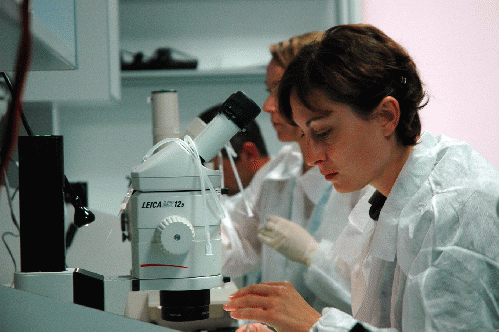The gender gap is widening.
The gender gap is a myth.
Both of these sentiments are frequently shared online. Gender equality is a contentious issue today. Since the ending of Hillary Clinton's bid as the first female president, the subject of gender inequality has raged in public discourse.
The biggest concern for educators in regards to gender equality is the perceived gender gap in science, technology, engineering, and mathematics (STEM) related fields. Polarized viewpoints present contradictory information, and it can be difficult to sort through fact and fiction.
Statistics on the matter indicate that this concern is legitimate. Of all the bachelor's degrees issued by accredited colleges in the U.S. in 2013, women received less than twenty percent of computer sciences and engineering degrees. Around forty percent of all physical sciences and mathematics degrees were awarded to women. As a result, less than a third of the science and engineering workforce is comprised of female employees.
Many of the problems that have caused this gap could be due to unconscious bias. According to research by the American Association of University Women, science and math fields are traditionally considered masculine, while humanities and arts are considered feminine. Furthermore, the AAUW reported that when a woman chooses to work or study in a science or math related field, they are considered "less likable" and "less competent" (regardless of demeanor or performance). These prejudices remain true for both male and female observers. Even women in STEM fields can be susceptible to these biases, which can bring about concerns over self-worth. This can be a mentally taxing burden. Women are discouraged from pursuing STEM studies or careers by both internal and external biases.
Of course, sexist attitudes are still a problem. Unfortunately, sexism is still a concern in academics and the workforce today. A common complaint from female students is that they feel "unwelcome in STEM culture". This problem does not diminish after graduation; in fact, a study by the Columbia Business School demonstrated that employers of engineering and science-related businesses are two times more likely to hire men over women when all qualifications are equal. Despite the progress that American society has made in regards to women's rights, misogyny is a factor in the current lack of qualified female STEM employees.
As a response to this problem, several organizations have offered scholarships to prospective female students in order to encourage them to enter STEM fields. For example, the Society of Women Engineers offers scholarships ranging from $1,000 to $20,000 for women pursuing degrees in engineering and computer science. The Association for Women Geoscientists offers similar scholarships for those seeking geosciences-related degrees. These scholarships are intended to attract women to fields in which they are underrepresented.
The gender gap in STEM fields are the cause of other inequalities. Considering that women tend to graduate in fields that are less lucrative, the current financial inequality between men and women should not be surprising. The highest-paying STEM fields for new employees are architecture majors and computer sciences. If more women became qualified professionals in these fields, the financial disparity between the genders would shrink.
Educators have also taken note. The discrepancy between males and females in STEM fields begins in elementary school and persists throughout students' academic careers. Clearly, the best way to combat gender inequality is through education. Conscientious teachers are learning to give female students personal encouragement and the support needed to succeed in STEM. They are consciously avoiding gender bias when calling on students, or when assigning grades.
Throughout the past few decades, the earning power of female employees has steadily risen; this is due to higher educational attainment. Recently, however, we have taken a few steps backwards. In 2016, the gender gap has actually widened. Based on projections by the World Economic Forum, the gap will not be completely closed until 2186. This is 53 years later than projections the WEF made last year.
Moving forward, educators from every field should work cooperatively to support women in STEM fields. This means confronting biases whenever they arise, and preparing students for the unique challenges that accompany an endeavor into such a career. The barrier that dissuades women from pursuing a career in a STEM field is a central cause of gender inequality in America.
(Article changed on December 20, 2016 at 15:09)





